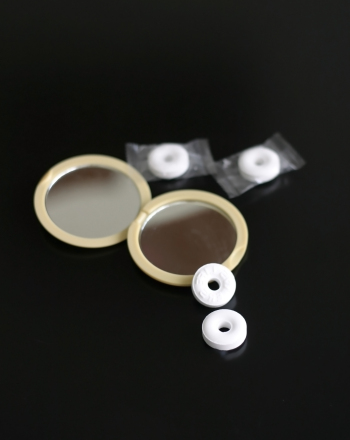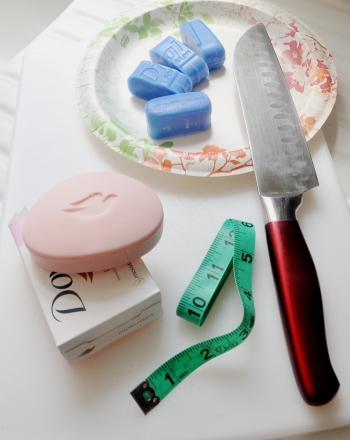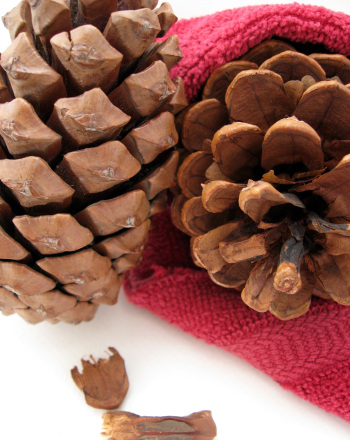Science project
Transpiration Experiment
Do plants sweat? Not quite, but they do lose water. Track down the missing mass in this experiment by learning how plants lose water to the air through transpiration.
Problem
How much water can a plant lose through transpiration?
Materials
- Three small, thin-leafed plants
- Three small, broad-leafed plants
- Small watering can
- Scale
- 6 plastic bags large enough to fit completely around each plant pot
- Masking tape
Procedure
- Get six small plants, three with wide leaves and three with narrow leaves. Use the masking tape and pen to give each one a number.
- Water the plants until water comes out of the bottom of the pot. If the plants are really dry when you start, water them thoroughly and wait a few minutes. Then, water them again. When the water has soaked in and the pot is full of water like a squishy sponge, it’s time to weigh the plants. Create a table that shows how much each plant weighs before and after the experiment.
|
Plant Name |
Weight Before |
Weight After |
|
#1 (Thin Leaf) |
|
|
- Create a hypothesis by addressing these questions:
- If you water plants and then put them in the sun, what will happen to the water?
- Would anything change if you put a plastic bag around the base of the plant?
- How would adding the bag change your experiment?

- Put the plants in full, warm sunlight for an hour, then take off the plastic and weigh each plant again. Record the weight in the table. Is the weight different? The same? Why do you think that this is the case? Did different plants lose different amounts of weight, or did they lose around the same amount? Why?
- Dry off the inside of each plastic bag. Re-seal the bags over the plants, return the plants to the sunny spot, and continue timing and weighing for several hours without adding any more water. What happens?
Results
During your transpiration experiment, the plants will lose water, even though they are in the bags. The broad-leafed plants will lose a little more than the thin-leafed plants, but depending on the size of the plant, it may not be measurable.
Why?
So how did the water sneak out of the plants?
When it’s a hot day, you might get a little sweaty. Plants “sweat” as well. Similar to how we lose water through our skin, plants lose water through their leaves.
Although you might not be able to see them, plants have small pores, or holes, on their leaves. Take a look at the bottom of a leaf under a microscope, and you will be able to see these holes, which are known as stomata. This is where plants can lose water through transpiration.
Even though it’s an invisible process, the loss of water from plants through transpiration is an important part of the water cycle because it adds a lot of water to our air. In just one year, every leaf on earth can send out much more than its own weight in water. In fact, a large oak tree can contribute 40,000 gallons of water a year to the air!
You probably water the plants in your house so that they’ll stay healthy—so if plants need water, then why do they lose it? Transpiration happens in part because plants need to breathe. Plants need to take in carbon dioxide, and to do this, they need to open their stomata. When this happens, water comes out. You’ve probably experienced this when you breathe as well: on a cold day, you can even see the water from your breath as it makes clouds in the air.
Transpiration also helps plants by cooling them down, much like how sweating helps us regulate our body temperatures. Transpiration also plays a big role in helping water move around the plant by changing the water pressure in plant cells. This helps minerals and nutrients move up the plant from the roots.
Going Further
What would happen to a plant if you were to put petroleum jelly on the leaves? How about olive oil? Try placing different substances on the leaves and weighing the plant, then do the experiment again. What would happen in a warmer room? Would there be more or less transpiration?
Education.com provides the Science Fair Project Ideas for informational purposes only. Education.com does not make any guarantee or representation regarding the Science Fair Project Ideas and is not responsible or liable for any loss or damage, directly or indirectly, caused by your use of such information. By accessing the Science Fair Project Ideas, you waive and renounce any claims against Education.com that arise thereof. In addition, your access to Education.com's website and Science Fair Project Ideas is covered by Education.com's Privacy Policy and site Terms of Use, which include limitations on Education.com's liability.
Warning is hereby given that not all Project Ideas are appropriate for all individuals or in all circumstances. Implementation of any Science Project Idea should be undertaken only in appropriate settings and with appropriate parental or other supervision. Reading and following the safety precautions of all materials used in a project is the sole responsibility of each individual. For further information, consult your state's handbook of Science Safety.












